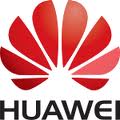Allot Communications, in an ongoing initiative to track global IP application and bandwidth usage and growth in mobile broadband networks, released Global Mobile Broadband Traffic Report (GMBT) for Q2-2009. The data was collected from leading mobile operators across globe with a combined user base of more than 150million subscribers.
Let’s summaries the key findings of the report:
- Global mobile data bandwidth usage increased significantly over Q2-2009, with a jump of 30{af589cdba9d77786c8c861317dbad60bba1e2ebbf56e2ffab874a1b59fde9ce3}. Asia-Pacific has the highest growth of 36{af589cdba9d77786c8c861317dbad60bba1e2ebbf56e2ffab874a1b59fde9ce3}, followed by Europe 28{af589cdba9d77786c8c861317dbad60bba1e2ebbf56e2ffab874a1b59fde9ce3} and America 25{af589cdba9d77786c8c861317dbad60bba1e2ebbf56e2ffab874a1b59fde9ce3}.
- HTTP Browsing is the #1 application both globally & in each individual region, though its growth rate is slower than HTTP streaming (Video) & HTTP downloads.
- HTTP streaming is the fastest growing application with rise of 58{af589cdba9d77786c8c861317dbad60bba1e2ebbf56e2ffab874a1b59fde9ce3}.
- HTTP downloads currently generate 19{af589cdba9d77786c8c861317dbad60bba1e2ebbf56e2ffab874a1b59fde9ce3} of mobile broadband traffic worldwide and in Europe. HTTP Downloads are currently more popular than Peer-to-Peer (P2P) file sharing (bit torrent).
- The single largest factor leading to cell congestion is P2P which accounts for 42{af589cdba9d77786c8c861317dbad60bba1e2ebbf56e2ffab874a1b59fde9ce3} of BW (Bandwidth) utilization in top 5{af589cdba9d77786c8c861317dbad60bba1e2ebbf56e2ffab874a1b59fde9ce3} cells.

So what’s conclusion? The most interesting part of this report states that mobile users are treating their mobile networks much same as their fixed networks. This is particularly true for heavy users who aren’t bothered about the type of access network they use.
Mobile Broadband networks face the same challenges as fixed networks- increasing BW demands and congestion. BW hungry applications are negatively impacting subscriber Quality of Experience (QoE) which tends to dominate the BW resources.
With technical innovation of ‘Direct Tunnel’ along with range of packet core solutions by Nokia Siemens Network, which provides operators with simpler ‘flat’ connectivity architecture, NSN expects mobile data to take up more network capacity than voice traffic by 2011. In a footnote, vendor states:
While Nokia Siemens Networks estimates that the number of bytes of mobile voice traffic will continue to grow steadily, the growing popularity of mobile broadband services and even machine-to-machine applications will create an exponential rise in the number of bytes of data traffic carried by mobile packet core networks worldwide. This will result in a yearly doubling of data traffic from almost 400 petabytes (400 million gigabytes) a year in 2009 to almost 2,000 petabytes (2 billion gigabytes) a year by 2011, bypassing the estimated volume of voice traffic (1,200 petabytes).
Close to 300 customers use Nokia Siemens Networks’ packet core solutions including operators such as America Movil, AT&T, NTT DoCoMo, Oi, Telecom Italia, Telefonica, and Vodafone.
But whether Mobile Broadband is cost effective as compared to DSL? Is it a profitable technology to invest in long term? We will have to wait and see more business models evolving in coming years, but one thing is clear, which ever way you go (irrespective of access technology) Data seems to the future of NGN mobile network.





